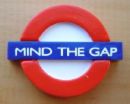
Superb, Well-Presented, Helpful at Multiple Levels, May 10, 2008
Ben Rigby
Edit of 18 May to recommend Groundswell: Winning in a World Transformed by Social Technologies as a different book, with more practical tips and annecdotal support, but in no way does that reduce my appreciation for this book. Both are excellent, I think of them as truly complementary of one another.
—–
I *like* this book. Although I have years of exposure to advanced information technology and read everything by gurus like Paul Strasssman (cf. Information Productivity: Assessing Information Management Costs of U. S. Corporationsand Stephen E. Arnold (Arnold IT, look for “Google 2.0: The Calculating Predator, not sold on Amazon), I learned stuff from this book, and I found it to be exactly right for getting an old-school CEO or other management skeptic “oriented.”
In 268 well-organized and well-presented pages, the book covers:
+ Blogging
+ Social Networking
+ Video and Photo Sharing
+ Mobile Phones
+ Wikis
+ Maps
+ Virtual Worlds
Each chapter has extremely clear headlines, gray boxes, figures, and endnotes. To get a sense of the book and the online offerings that back it up, visit mobilizingyouth.org, just add the www.
A special value is short essays from top practitioners including Mitch Kapor whose essay, next to last, focuses on the coming convergence of virtual worlds and social networking. Visit BigPictureSmallWorld for a sense of the possibilities there–I have very deep admiration for Medard Gabel, who built the analog World Game with Buckminster Fuller, and I am so very eager to see him create EarthGame(TM) in which we all play ourselves and have access to all information in all languages all the time–at that point, we will end looting of our commonwealth, end corruption, and create invite wealth or as he puts it in the title of his new book, “Seven Billion Billionaires.”
Most useful to me were the following:
+ Use all these tools internally to get a sense of them, before trying to do something with the broader online population
+ One billion people are connected, the rest are not, but what the billion do with their connections could impact on how quickly we get the other 5-6 billion connected and creating wealth
+ 55% of teens are active online, 80% of college students have a Facebook profile
+ Digg is an example of a global intelligence service in which every citizen is an intelligence consumer, collector, and producer
+ Cool examples that I will certainly look into include Care2, Causes, Hi5, and Gather
+ Politicians (including the three running for President now) simply do not get it. They are still using phone banks that call at all hours and spamming (Obama does less of it) instead of asking permission and then building on the relationship
+ I am very impressed by the natural manner in which the book communicates the relationship between having a good story with heroes, villians, and catalysts, and the sequence of fund-raising via text connection and follow-up. This book strikes me as both a very very good elementary text for digital immigrants (us old guys) and also a useful “once over” for the more experienced who may be overlooking a couple of pieces of the overall campaign.
+ The book emphasizes the many uses of the wiki, many of them internal, some external, but the most important being that wikis are a way of crowd sourcing. See the first book from Earth Intelligence Network, Collective Intelligence: Creating a Prosperous World at Peace (free at oss.net/CIB just add the www, but utterly lovely here at Amazon) and especially the later chapters on large scale collective and collaborative intelligence in action.
+ Tag clouds are vital, as is the selection of unique tags for clusters of informaiton you want to make easily available.
+ Virtual worlds are in their infancy, and when they finally develop, will be extraordinary as nuanced immersive learning environments (low cost low risk environmental, I would add).
The last essay from Katrin Verclas is great, and I selected the following quote with which to end this review–it captures the essence:
“Web 2.0 describes a participatory, bottom-up, decentralized world full of individual expression where people have direct access to one another and enjoy an unprecedented ability to organize, meet, and coordinate without centralized control or traditional hierarchies.”
YES!
See also:
The Tao of Democracy: Using Co-Intelligence to Create a World That Works for All
The World Cafe: Shaping Our Futures Through Conversations That Matter
Society's Breakthrough!: Releasing Essential Wisdom and Virtue in All the People
The Change Handbook: The Definitive Resource on Today's Best Methods for Engaging Whole Systems
How to Change the World: Social Entrepreneurs and the Power of New Ideas, Updated Edition
The New Craft of Intelligence: Personal, Public, & Political–Citizen's Action Handbook for Fighting Terrorism, Genocide, Disease, Toxic Bombs, & Corruption
Spoiling for a Fight: Third-Party Politics in America


